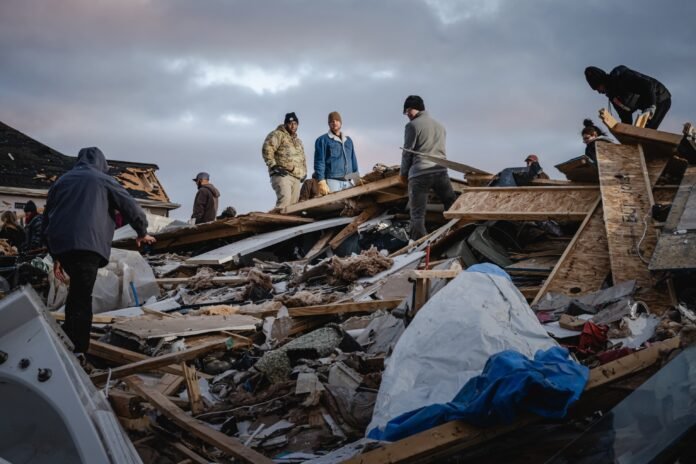The climate spending burden in the United States has reached historic levels. Over the past 12 months ending May 1, the U.S. spent nearly $1 trillion on climate-related recovery and prevention. That amount equals 3% of the nation’s GDP, according to Bloomberg Intelligence.
This massive cost reflects a growing trend. Consumers are indirectly affected, as money goes toward disasters rather than preferred goods and services. Analysts call this a “stealth tariff” that reduces spending power.
In late September 2024, Hurricane Helene slammed into Florida’s panhandle. It became the strongest storm ever recorded in that area. Just ten days later, Hurricane Milton struck. Together, these two storms caused $113 billion in damage.
Then, in January 2025, massive fires swept through Los Angeles. They added another $65 billion to national disaster costs. This shows how frequent and severe weather events now drain the economy.
The report titled “The Climate Economy: 2025 Outlook” shows alarming figures. It uses public data and highlights that disaster-related global spending has reached $18.5 trillion since 2000.
In the U.S., insurance premiums have doubled since 2017. This increase contributes heavily to the climate spending burden. Other major costs come from power outages, recovery efforts, and damage left uninsured.
Since 2000, $7.7 trillion in U.S. GDP growth about 36% is linked to these climate-related expenses. Poorly planned development and worsening weather both raise risks.
Federal aid once covered about a third of disaster costs until 2016. But today, that share has fallen to just 2%. Budget freezes and cuts could shrink that support even more. As a result, communities must borrow through general debt. Sadly, many post-disaster economies can’t repay that debt.
Insurance is also adding to the problem. In 2023 alone, premiums jumped by up to 22%. Insurers plan another 6% hike in 2025. The Consumer Price Index does not include these rising costs. Therefore, actual housing expenses could now exceed 40% of total household spending.
Meanwhile, 100 companies from insurance to construction have gained from climate-related funds. They outperformed the S&P index by 7% for three straight years.
In conclusion, the climate spending burden now touches every part of the U.S. economy. From storms and fires to federal aid and rising premiums, the costs keep rising. Without new solutions, the climate spending burden will only grow worse in years ahead.
For more business updates, visit DC Brief.


